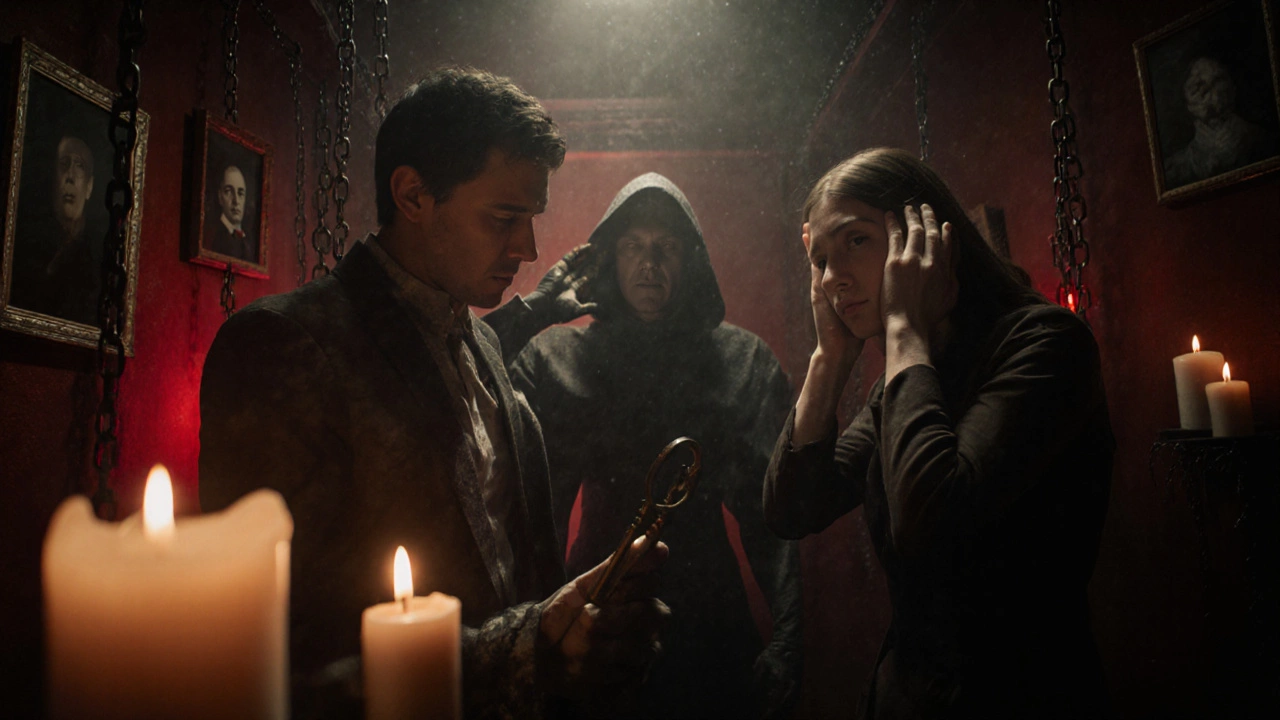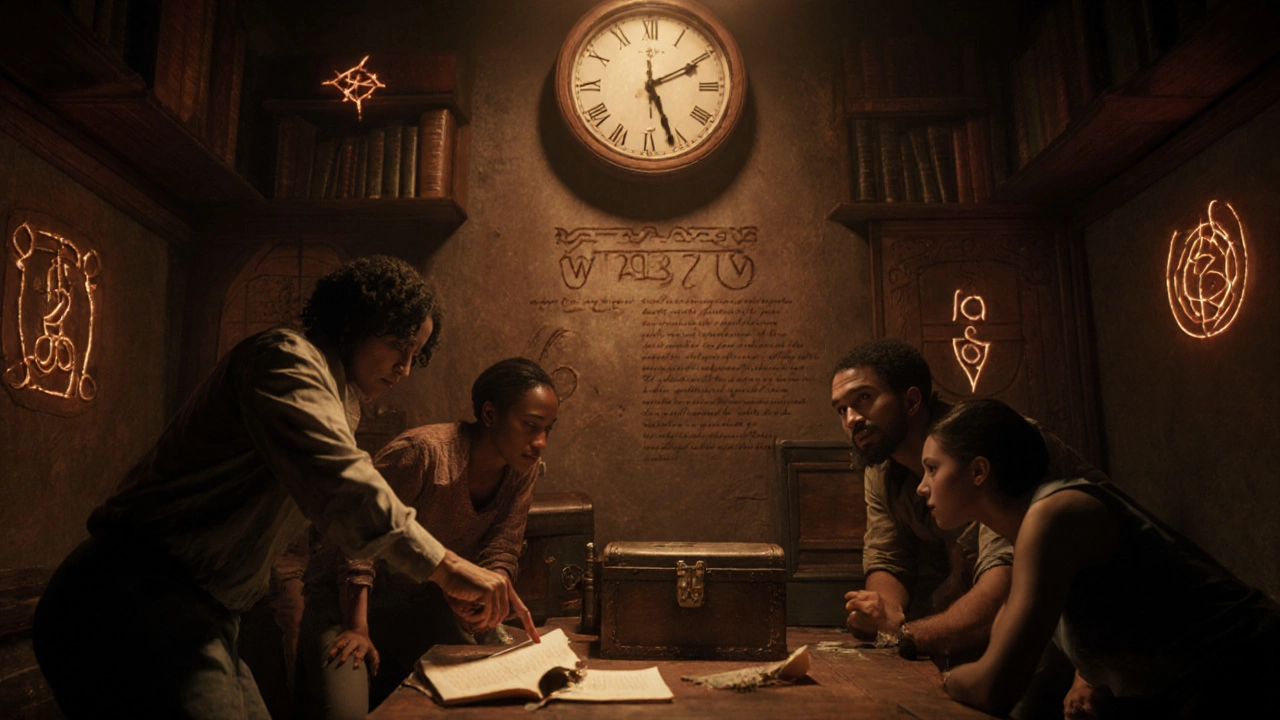Escape Room Success Rate Calculator
Team Settings
Team Strategy Tips
Teams with assigned roles have 65% success vs 38% without
Teams without hints are 40% less likely to escape
Teams that listen have 65% success vs 38% chaos teams
Ever walked out of an escape room feeling like you just got beat by a puzzle that didn’t even try? You’re not alone. Most people think escape rooms are designed to be beaten - but the truth? A lot of teams don’t make it out in time.
What’s the real completion rate?
Escape room operators don’t always share their stats, but industry surveys from groups like the Escape Room Association of North America and data collected from over 500 rooms across Australia, the U.S., and the U.K. show a clear pattern: only about 55% to 60% of teams successfully escape within the hour.
That means nearly half of all groups - families, friends, coworkers - walk out without solving the final clue. It’s not because they’re bad at puzzles. It’s because escape rooms are built to be challenging, not impossible. The designers want you to feel the pressure, the rush, the "almost" moment. And that’s part of the experience.
Why do so many teams fail?
Most teams fail for the same three reasons - and none of them have to do with intelligence.
- They don’t communicate. Someone finds a key hidden in a book and keeps it to themselves because they think they’re "close" to solving it. Meanwhile, someone else is stuck on a lock that needs that exact key. No one talks. Five minutes later, the clock’s ticking, and they’re still split up.
- They overcomplicate things. A team spends 12 minutes trying to decode a cipher when the answer is written right on the wall in plain text. They’re looking for hidden meanings, but the room is designed to trick you into overthinking. Sometimes, the solution is literally staring you in the face.
- They ignore the hints. Many teams avoid asking for hints because they think it’s "cheating." But hint systems aren’t there to help you fail - they’re there to keep you from quitting. The average team that asks for one hint has a 40% higher chance of escaping than those who don’t ask at all.
One operator in Melbourne told me his most common feedback from failed teams was: "We were so focused on the big puzzle, we didn’t notice the small one." That’s the trap. Escape rooms don’t have one master puzzle. They have a chain of small clues. Miss one, and the whole thing breaks.
Some rooms are just harder than others
Not all escape rooms are created equal. Difficulty levels vary wildly - and operators don’t always label them clearly.
Beginner rooms (usually labeled "Family Friendly" or "Easy") have completion rates above 70%. These rooms rely on visual cues, simple locks, and straightforward logic. Think: find the key, open the box, unlock the door.
Intermediate rooms (the most common type) hover around the 55% mark. These add timed elements, hidden compartments, and multi-step puzzles. You need to work together, not just individually.
Advanced and horror-themed rooms? Those drop to 30%-40% completion. Some are designed to be nearly unbeatable - not because they’re unfair, but because they’re meant to be immersive experiences. A horror room might use sound, lighting, and actors to overwhelm your senses. Solving puzzles becomes secondary to surviving the atmosphere.
One operator in Sydney told me their "Cursed Library" room has only been beaten twice in 18 months. Both teams were puzzle designers themselves. The rest? They left with a story - and a photo of their group looking shocked at the exit.

Who actually wins?
It’s not the smartest person in the room. It’s not the fastest. It’s the team that listens.
Studies from the University of Melbourne’s Human-Computer Interaction Lab found that teams with clear role distribution - one person managing time, one calling out clues, one checking inventory - had a 65% success rate. Teams where everyone shouted at once? 38%.
Successful teams also tend to:
- Start by scanning the whole room - not just the first object they see
- Write down every number, symbol, or word they find
- Ask for a hint before they hit the 40-minute mark
- Don’t fixate on one puzzle for more than 8 minutes
One team I spoke to in Brisbane beat their room by accident. They were trying to open a drawer and pulled out a book. The book had a torn page. One person thought it was a red herring. Another noticed the torn edge matched a symbol on the wall. They put the two together. That was the final clue. They didn’t solve anything - they just noticed a pattern no one else saw.
It’s not about winning. It’s about the moment.
Even if you don’t escape, you still got something valuable: a shared experience. The laughter when someone finds a fake skull in the toilet. The groans when the clock hits 5:00. The high-fives even when you lose.
Escape rooms aren’t tests. They’re social experiments. They measure how well you work under pressure, how you handle frustration, and how you react when things don’t go as planned.
And honestly? That’s why people keep coming back.
One guy in Melbourne told me he’s done 47 escape rooms. He’s escaped 29 times. He says the ones he didn’t beat? Those are the ones he remembers the most. "I still text my team every year on the anniversary of the Cursed Clock Tower. We didn’t get out. But we laughed harder than we have in years."

How to improve your chances
If you want to beat more rooms, here’s what actually works:
- Book a beginner room first. Don’t jump into a horror or sci-fi room on your first try. Build your confidence.
- Assign roles before you enter. One person watches the clock. One person calls out clues. One person handles objects. It reduces chaos.
- Write everything down. Use the notepad they give you. Even if it seems useless now, it might connect later.
- Ask for a hint at 35 minutes. Waiting until 45 is too late. Most rooms have a built-in hint system for a reason.
- Don’t touch everything. Some items are just props. Focus on things that move, open, or have numbers.
And if you lose? Don’t be embarrassed. You’re in the majority.
What happens after you fail?
Most escape rooms give you a debrief right after the game. This is your chance to learn. The game master will show you what you missed, explain the hidden clues, and sometimes even tell you how many teams beat the room that week.
Some places even let you come back for a free retry - if you lost by less than 3 minutes. It’s not a guarantee, but it’s worth asking.
And if you’re still stuck on a room? Google the room name + "solution" after you’ve left. Most operators don’t mind if you look up the answer later - they just want you to have fun while you’re there.
What percentage of people escape escape rooms?
On average, between 55% and 60% of teams successfully escape escape rooms within the hour. Success rates vary by difficulty: beginner rooms have over 70% completion, while advanced or horror-themed rooms can drop as low as 30%-40%.
Why do most teams fail escape rooms?
Most teams fail because they don’t communicate well, overcomplicate simple clues, or avoid asking for hints. Often, they focus too hard on one puzzle and miss smaller, critical clues scattered around the room.
Are escape rooms designed to be beaten?
Escape rooms are designed to be challenging but beatable. Operators aim for a 50%-60% success rate because it creates tension without frustration. Rooms that are too easy lose excitement; rooms that are too hard feel unfair. The sweet spot is a good struggle.
Do hints help you escape?
Yes. Teams that ask for at least one hint have a 40% higher chance of escaping than those who don’t. Hints aren’t a sign of failure - they’re part of the design. Most rooms are built with a safety net so teams don’t get stuck for too long.
What’s the best way to win an escape room?
Assign roles: one person tracks time, one calls out clues, and one handles objects. Scan the whole room first, write down every clue, and ask for a hint before the 40-minute mark. Don’t fixate on one puzzle - move on if you’re stuck for more than 8 minutes.
Final thought: You’re not failing. You’re participating.
Escape rooms aren’t about winning or losing. They’re about how you react when things get messy. The team that screams, laughs, and argues - then still tries again - is the one that gets the best memory.
So if you didn’t escape? Good. You’ve got a story. And next time? You’ll know exactly what to do differently.

